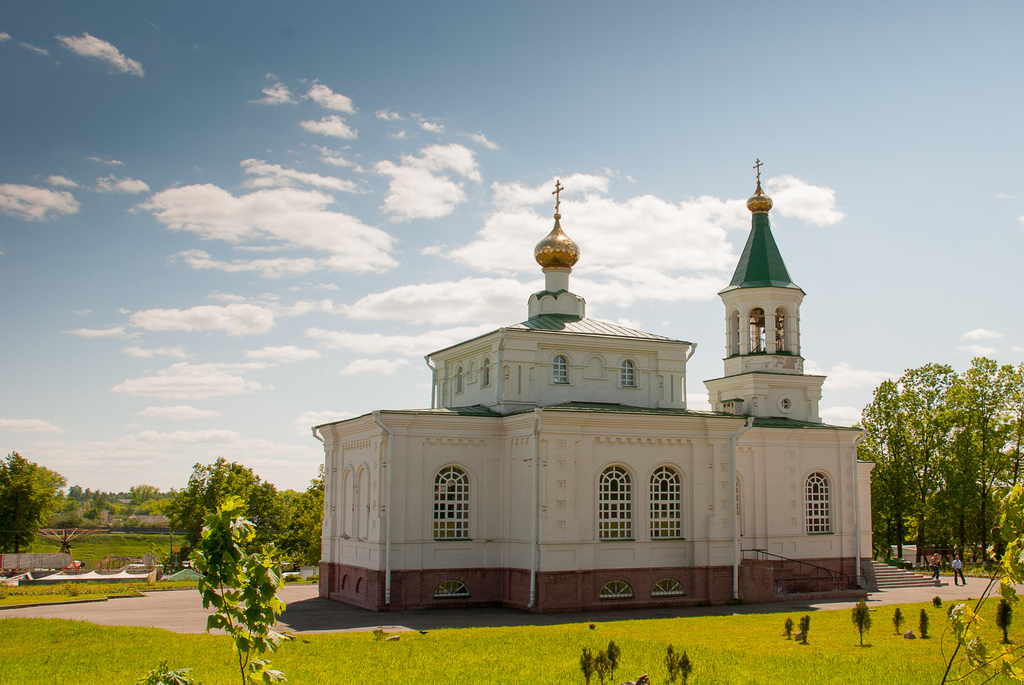- Vitebsk region, Polotsk District, Polotsk, 89 Euphrosyne of Polotsk St
A History That Goes Back Centuries
The monastery was founded in 1125 by Saint Euphrosyne of Polotsk, a noblewoman from the Rurik dynasty who renounced secular life in order to serve God. Her name is associated with many transformations in the spiritual and educational life of ancient Polotsk. At her initiative, in 1161, the Transfiguration of the Savior Cathedral was built – a structure that has survived to this day. It became the architectural and spiritual center of the monastery, preserving ancient frescoes and the recreated Cross of Saint Euphrosyne – one of the main relics of Orthodox Belarus.
Unique Architecture
The Transfiguration Cathedral is a prime example of ancient Polotsk architecture. Its strict forms, harmonious proportions, and astonishing preservation make it a true gem of 12th-century architecture. Particularly notable are the fragments of frescoes created by Byzantine masters, which have survived to this day.
In addition to the cathedral, the monastery complex includes the 19th-century Church of the Exaltation of the Cross, a refectory church, a bell tower, and residential buildings. Each of these structures contributes to the integrity of the architectural ensemble and creates an atmosphere of peace and grandeur.
Trials of Time
Over the centuries, the monastery endured difficult times: destruction, closure during the Soviet era, and the loss of relics. However, the memory of Saint Euphrosyne and the importance of the monastery to the Belarusian people ensured its survival. In the 1990s, a period of revival began: services were restored, buildings were renovated, and the recreated Cross of Saint Euphrosyne returned to its rightful place in the cathedral.
Life of the Monastery Today
Today, the monastery is not only a place of worship but also a center of spiritual education. Liturgies are held here regularly, the sisterhood is active, and excursions are conducted for pilgrims and tourists. The convent follows a monastic rule and preserves centuries-old traditions.
Pilgrims come to touch the relics, pray by the relics of Saint Euphrosyne, experience the spirit of Orthodox faith, and find spiritual comfort. The monastery is especially busy on the feast days of the saint – June 5 and September 28.
Why Visit?
Visiting the Spaso-Euphrosyne Convent is an opportunity to find yourself at the heart of Belarusian history and spirituality. Here, the beauty of architecture, the power of faith, and the tranquility of nature converge. Even a short visit offers a chance to step away from daily stress, find peace, and focus inward.
Visitors often note the special atmosphere of silence and light that reigns throughout the monastery grounds. It is an ideal place for personal pilgrimage, a family trip, or a historical journey through Belarus.
How to Get There
The monastery is located in Polotsk, in the Vitebsk Region. You can reach it by train or bus from Minsk, and then take a taxi or public transport within the city. The complex is within walking distance from the city center.
The Spaso-Euphrosyne Convent is not just an architectural landmark. It is living history – embodied in stone, prayer, and the memory of generations. A place where spirituality becomes visible, and faith becomes part of daily life.











